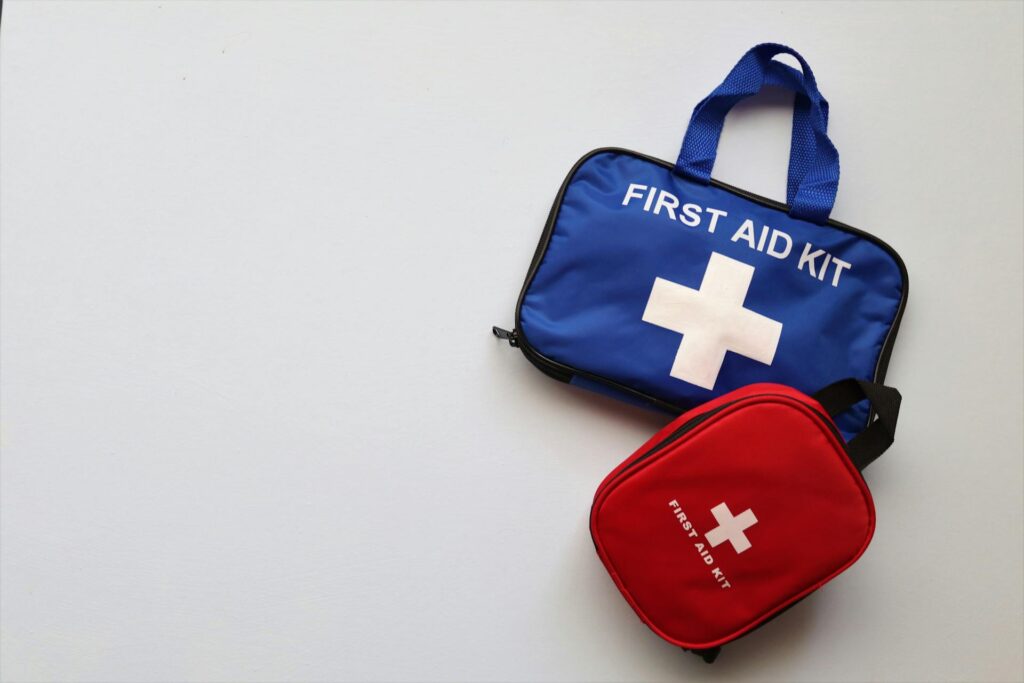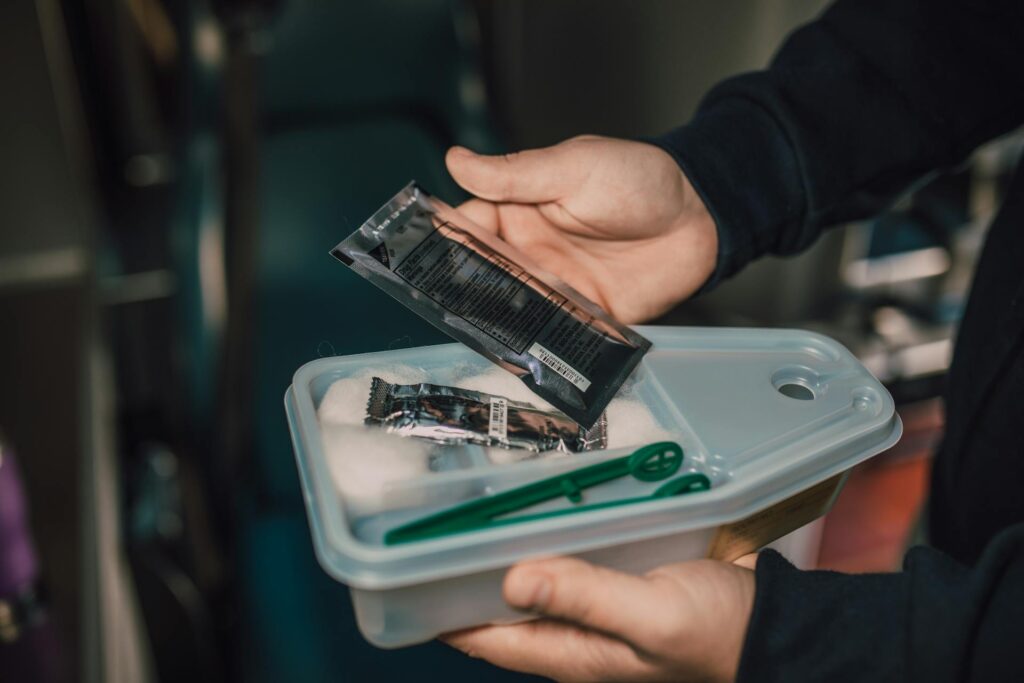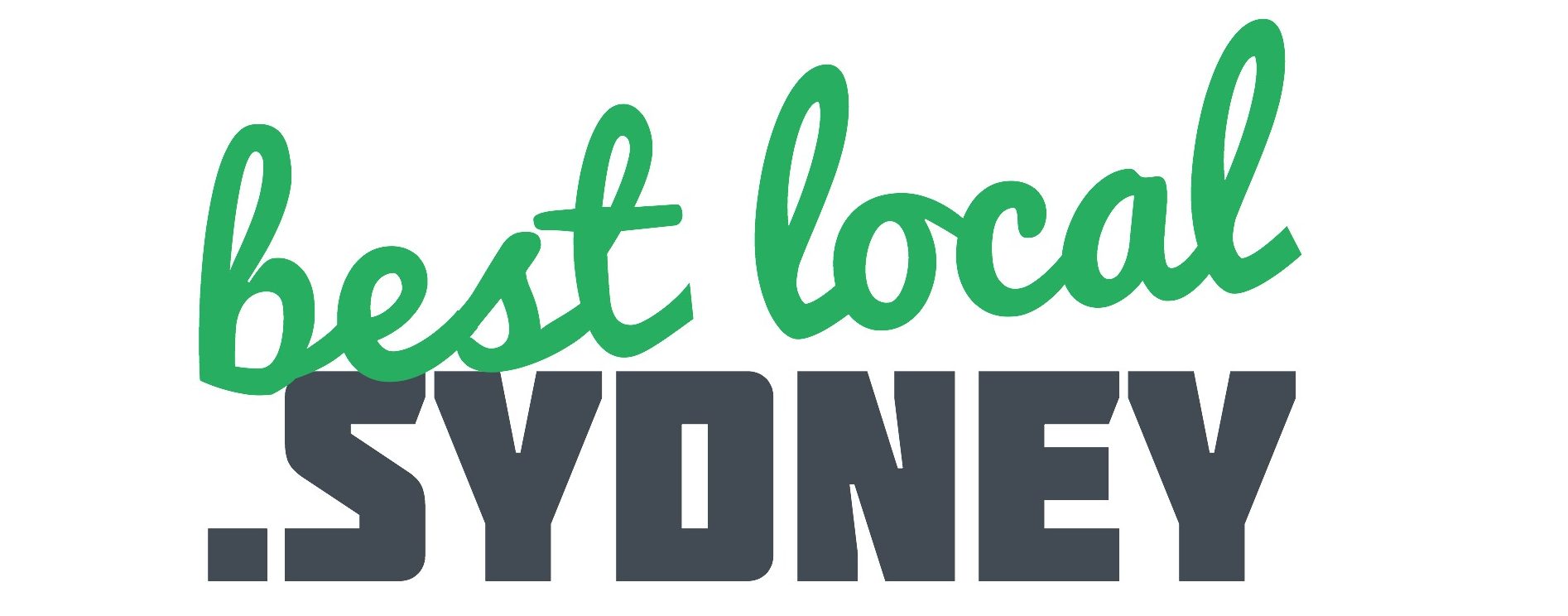
Keeping your team safe starts with being prepared! Whether you’re running a busy office or managing a construction site, having the right safety systems in place is non-negotiable. From ongoing first aid replenishment to choosing the best first aid kits for offices, maintaining a compliant and responsive workplace is the key to minimising risks and responding swiftly in emergencies!
In this guide, we’ll walk you through the essentials: why first aid matters, how to benefit from local first aid courses, must-have site safety products, and how to keep your workplace first aid kits fully stocked and compliant. If you’re building from scratch or reviewing your current setup, these tips will help you create a safer, more prepared workplace for everyone!
Why Workplace Safety & First Aid Matters
Workplace safety isn’t just a regulatory requirement. It’s an important responsibility for every business! Ensuring a safe environment protects your employees, boosts morale, and supports productivity. Whether you manage a small office or a large industrial site, investing in safety protocols and first aid preparedness is essential to minimise risk and respond effectively to incidents.
Emergencies such as slips, burns, allergic reactions, or cardiac events can occur without warning. Having trained staff and properly stocked first aid kits can turn potentially serious incidents into manageable situations. This is why regular first aid replenishment is vital: to make sure that supplies are always up to date, accessible, and tailored to the specific needs of your workplace!
Training is another crucial component. A certified first aid course equips employees with the skills and confidence to act swiftly and correctly in emergencies. Immediate response can reduce recovery time, prevent complications, and even save lives!
Beyond the physical benefits, a well-prepared safety program reinforces your company’s commitment to employee well-being. It demonstrates due diligence, improves legal compliance, and builds trust across your team. Prioritising workplace safety and first aid safeguards your people, protects your reputation, and ensures a safer, more resilient workplace for everyone!
First Aid Courses in Campbelltown: A Local Essential

One of the most effective ways to improve safety in the workplace is through proper training. If you’re located in Western Sydney, enrolling your staff in a first aid course in Campbelltown is a smart, local solution to ensure your team is equipped with life-saving skills. These accredited courses provide essential skills that will empower staff to respond quickly and confidently in medical emergencies. They will learn to handle everything from treating burns and wounds to performing CPR or managing an allergic reaction!
Local training also means fewer disruptions to your workflow. With providers based in Campbelltown, it’s easy to schedule onsite sessions or attend nearby classes that fit around your business hours. Many courses are tailored for different industries so that the training is relevant to the risks and needs of your specific workplace.
As well as being vital for health & safety compliance, first aid training encourages a culture of safety and care within your workplace. When employees know how to respond during an incident, they feel more confident and valued! This then naturally contributes to higher morale and a stronger sense of teamwork.
Incorporating regular training ensures your business remains compliant and well-prepared. It’s a great investment that supports safety and overall peace of mind!
Site Safety Products Every Worksite Needs
Whether you’re managing a construction site, warehouse, or manufacturing facility, having the right site safety products in place is essential for protecting workers and guaranteeing compliance with workplace health and safety regulations. A safe site isn’t just about ticking boxes — it’s about preventing accidents, minimising hazards, and creating a culture where safety is part of everyday operations.
High-Visibility Clothing And Protective Equipment
This includes hard hats, safety glasses, gloves, and steel-toed boots, which are the frontline of personal protection. Ensuring that your team is properly equipped helps reduce the risk of injury and keeps everyone visible and protected in high-risk areas.
Clear Signage
This is another must-have. Warning signs, hazard notifications, and emergency exit markers help guide safe behaviour and reduce confusion during critical moments. Make sure all signs comply with Australian Standards for visibility and clarity.
First Aid Stations And Emergency Response Equipment
These are non-negotiable. Fully stocked first aid kits, fire extinguishers, spill kits, and eyewash stations should be easily accessible and regularly maintained through scheduled first aid replenishment.
Safety Barriers, Cones, And Fencing
These items help control movement around dangerous areas, especially in construction zones or places with heavy machinery. These tools help prevent unauthorised access and clearly define risk zones.
With the right safety gear and systems in place, you’re not just meeting compliance standards — you’re actively protecting your team and creating a work environment built on care and prevention!
Choosing the Right First Aid Kits for Offices
Every workplace—no matter the size—needs a properly stocked first aid kit. For offices, it’s not just about having a kit tucked away in a cupboard; it’s about ensuring it’s well-equipped, accessible, and regularly maintained. Choosing the right first aid kits for offices starts with understanding your workplace size, layout, and the specific risks your team may face. If you have a large or multi-level workspace, you may need more than one first aid kit in clearly marked, easy-to-reach areas.
First Aid Kit For Offices Checklist:

Essential First Aid Supplies:
- Adhesive bandages (assorted sizes) – for minor cuts and abrasions
- Non-adherent wound dressings – various sizes
- Gauze swabs – for cleaning and covering wounds
- Antiseptic wipes or solution – to clean wounds
- Saline solution – for eye wash and wound irrigation
- Disposable gloves (nitrile or latex-free) – minimum five pairs
- Sterile eye pads – at least 2
- Triangular bandages – minimum of 2 (for slings or wound covering)
- Crepe bandages (medium & large) – for sprains or securing dressings
- Adhesive tape – to secure dressings
- Scissors – with a blunt end, for cutting tape or clothing
- Tweezers – for removing splinters or debris
- CPR face shield or resuscitation mask – with one-way valve
- Safety pins – to secure bandages
- Thermal blanket – for shock or cold exposure
- Instant cold pack – single-use
- Burn gel or burn dressing – for minor burns
- First aid booklet or instruction guide – easy to follow
- Notebook and pen – to record incidents
- Emergency contact numbers – laminated sheet
- Resealable plastic bags – for waste or storage
Optional First Aid Extras:
- Eyewash station or bottles – if working with chemicals or dusty environments
- Personal medications (must be supplied by the employee and properly labelled)
- Defibrillator (AED) – recommended for large offices or high-risk environments
Diligent First Aid Replenishment
Equally important is first aid replenishment, which is the process of routinely checking and restocking your kits. Supplies can expire, get used, or be damaged over time, which means an out-of-date or empty kit could fail you during an emergency. Replenishment ensures your first aid supplies are always complete and compliant with Safe Work Australia guidelines!
You have two options for managing this: assign a trained in-house staff member to perform monthly kit checks using a checklist or partner with a professional first aid replenishment service. These services offer scheduled visits to inspect and restock your kits, saving you time while still ensuring total compliance!
Hiring a service also gives you access to industry experts who can recommend additional supplies or kit upgrades as your business grows. Combined with employee training—such as enrolling your team in a first aid course in Campbelltown—you can create a safer, more prepared office environment.
Top Tips for Workplace Compliance and Readiness

If you want to maintain a safe working space, it’s important to take a proactive approach. Here are some top tips to boost your workplace readiness and stay ahead of safety obligations!
1. Develop a Digital Safety Management System
Using software or apps to track safety compliance, incident reporting, staff certifications, and first aid replenishment schedules can streamline your processes. These platforms provide real-time updates and reminders, ensuring nothing slips through the cracks.
2. Conduct Regular Mock Drills
Fire drills are standard, but what about mock medical emergencies or chemical spill simulations? Practising a variety of emergency scenarios helps staff react calmly and efficiently, improving outcomes during real incidents.
3. Create a Safety Champions Program
Appoint employees from different departments to act as “Safety Champions.” They can serve as first responders, help monitor compliance, and reinforce safety protocols among peers, turning safety into a team-wide priority.
4. Keep a Compliance Calendar
Stay ahead of audits and legislative updates by maintaining a shared compliance calendar. Schedule annual reviews, risk assessments, and training refreshers well in advance.
5. Provide Mental Health First Aid Training
Safety isn’t just physical. Equipping staff with the tools to identify and support mental health issues in the workplace adds another layer of preparedness and demonstrates genuine care for employee wellbeing.
6. Audit Signage and Accessibility
Ensure emergency exits, first aid stations, and fire extinguishers are clearly marked, unobstructed, and accessible to all employees, including those with disabilities.
Equip Your Workplace For Safety!
Creating a safe and compliant workplace may take some careful planning, but it is well worth the effort. From training staff with Campbelltown first aid courses to keeping your kits replenished and your site well-equipped, every step counts! Not sure where to start or how to stay compliant? Reach out to a workplace safety expert, such as All First Aid & Safety, for personalised guidance and peace of mind!
First image in this article by Roger Brown
